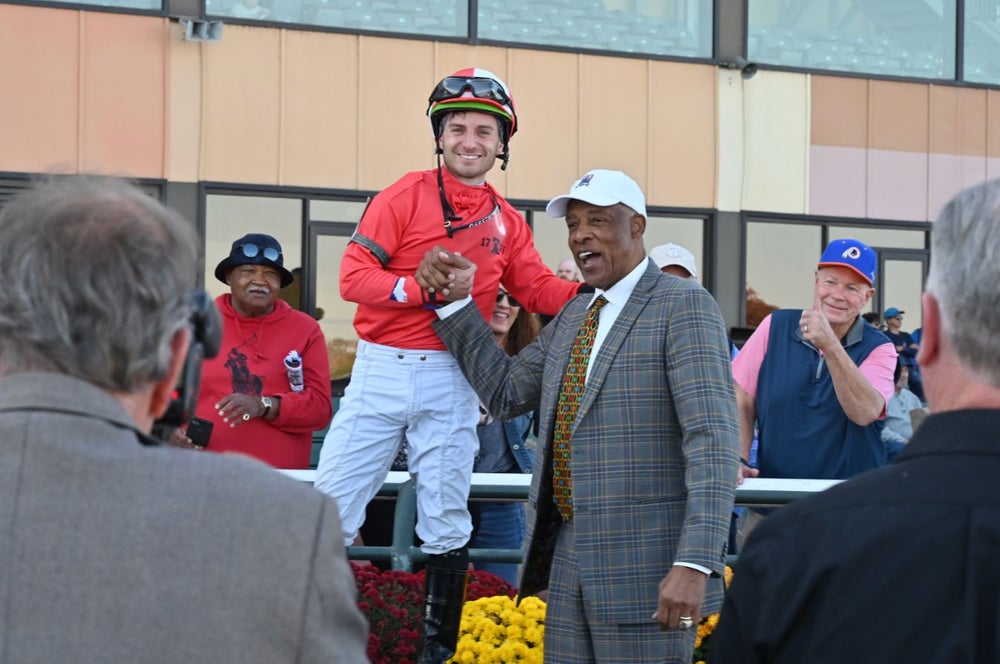Opinions expressed by Entrepreneur contributors are their own.
Many founders enter a new industry with dreams of disruption. But when Randall Lane and Bob Daugherty launched the National Thoroughbred League, their goal was different: to elevate a legacy sport that’s long been iconic but largely unchanged.
Horse racing is one of the oldest sports in history. But at a time when sports assets are among the hottest investments, they have, ironically, lagged behind. The sport generates billions in revenue, yet its growth has remained flat, even as the broader sports industry surges ahead.
“It’s a riddle,” Lane says. “Why hasn’t a sport that everyone knows, that’s universally popular, with tens of millions of fans and billions already spent, evolved like the others?”
Related: 3 Entrepreneurial Lessons I Learned From Raising Horses
Taking the reins
Like all major sports, the National Thoroughbred League’s foundation is ticket sales. They’re not only the league’s biggest revenue driver but also attract sponsors. Once ticket sales take off and sponsors get on board, media companies start eyeing broadcast rights. That’s where the real money is for leagues like the NFL and NBA.
But horse racing offers something most sports don’t: a built-in revenue stream from gambling.
“Unlike other leagues that barely see a dime from betting, we directly benefit,” Lane says. “That means we’re not just a sports league—we’re also a gambling company. Both industries are booming, and being able to operate in both, seamlessly and naturally, is a huge advantage.”
The founders of the NTL took cues from traditional, human-centric leagues like the NFL and NBA, aiming to foster a sense of community among fans by forming teams.
Daugherty, a Cleveland native, says his 94-year-old father still calls him after every Cavaliers game. He dreams of a day when families talk about the Maryland Colts or the Philadelphia Stallions with the same passion. Lane sees Formula 1 as the true North Star for NTL.
“We want to become the F1 of thoroughbred racing, both in terms of experiences and scope,” he says. “We’re on our way to becoming a bridge for everyday sports fans to fall in love with thoroughbred racing. If we can grow the fanbase for this deserving sport, the entire industry stands to benefit.”
Content-wise, horse racing is tailor-made for the social media age. Instead of trimming a two-hour game into highlight reels, NTL can post an entire race in under two minutes — or just the final stretch.
Related: Boogie Fland on How NIL is Changing the Path to the NBA
Jockeying for attention
Building that kind of loyalty takes star power, which isn’t easy in a sport where the athletes’ personalities boil down to how much hay they eat. To help bridge that gap, NTL has teamed up with high-profile owners like Ravens quarterback Lamar Jackson and NBA Hall of Famer Julius Erving, both of whom own teams.
“Our owners are part of the experience,” Daugherty says. “Dr. J has been incredible — when he went to Phoenix, he met the jockeys, connected with fans and popped champagne with his team after the championship.”

Image credit: National Thoroughbred League
The league also benefits from Lane’s background at Forbes, where he created the iconic Forbes 30 Under 30 list and the Forbes Highest-Paid Athlete list and currently serves as chief content officer.
“Sports and media are similar,” Lane says. “It’s about accumulating an audience and giving people a product that they want to buy.”
Because of his background, Lane is uniquely versed in the power of storytelling and is already using that to his advantage with NTL.
“Everyone loves horses, he says. “From old men to my daughters, horses have universal appeal. By creating stars around them, we can tell perfect stories.”
Plus, unlike other leagues, they’ll never have to worry about one of their athletes tweeting something controversial.
In the spirit of avoiding controversy, NTL has also made the health and safety of the horses a major priority. Because of its fragmentation, horse racing lacks strong industry safety standards. Lane sees that weak point as yet another avenue for innovation, saying, “It allows us to make thorough racing as safe as possible by setting legal league rules that everyone must abide by.”
Daugherty views the horses as no different from a family pet.
“Yes, it’s a sport,” he admits. “But thoroughbreds have been bred to run—and run fast.”
He adds that he and Lane were invited to join the board of directors for the Horseracing Integrity and Safety Authority (HISA) by CEO Lisa Lazarus, and that NTL also donates to the Thoroughbred Aftercare Alliance.
“Our goal is to put on the world’s best horse racing, create an incredible experience for our fans, sponsors and patrons,” Daugherty says. “That starts with taking care of the athletes.”
Heading into just its third season, NTL is still early in the race. But with the sport’s rich history and the founders’ modern approach, the league looks poised to go the distance.


